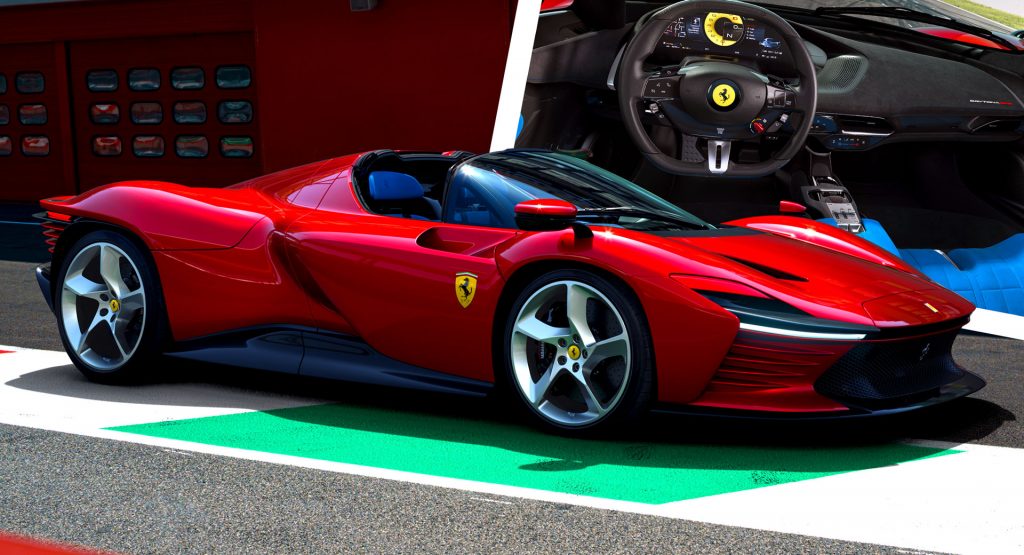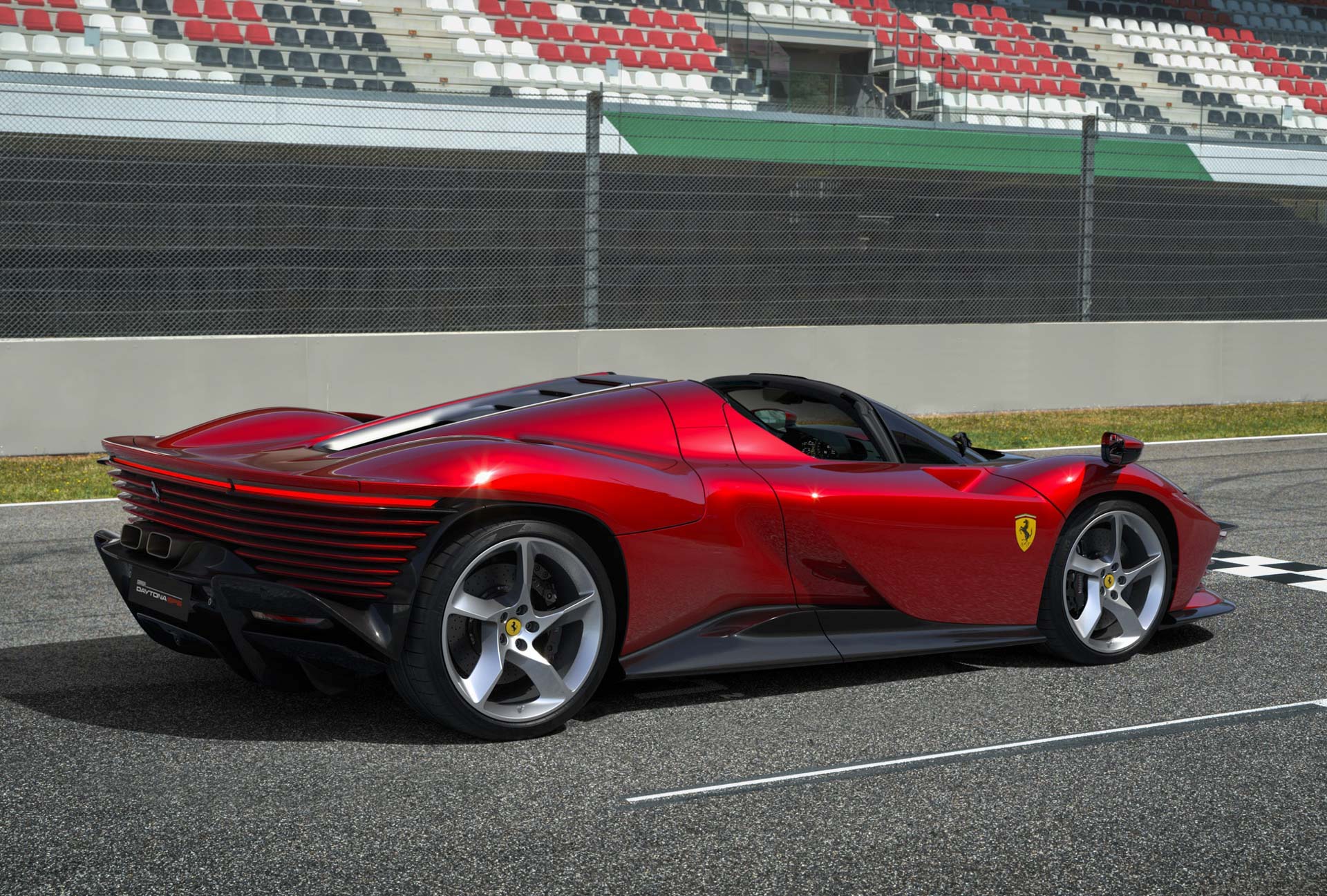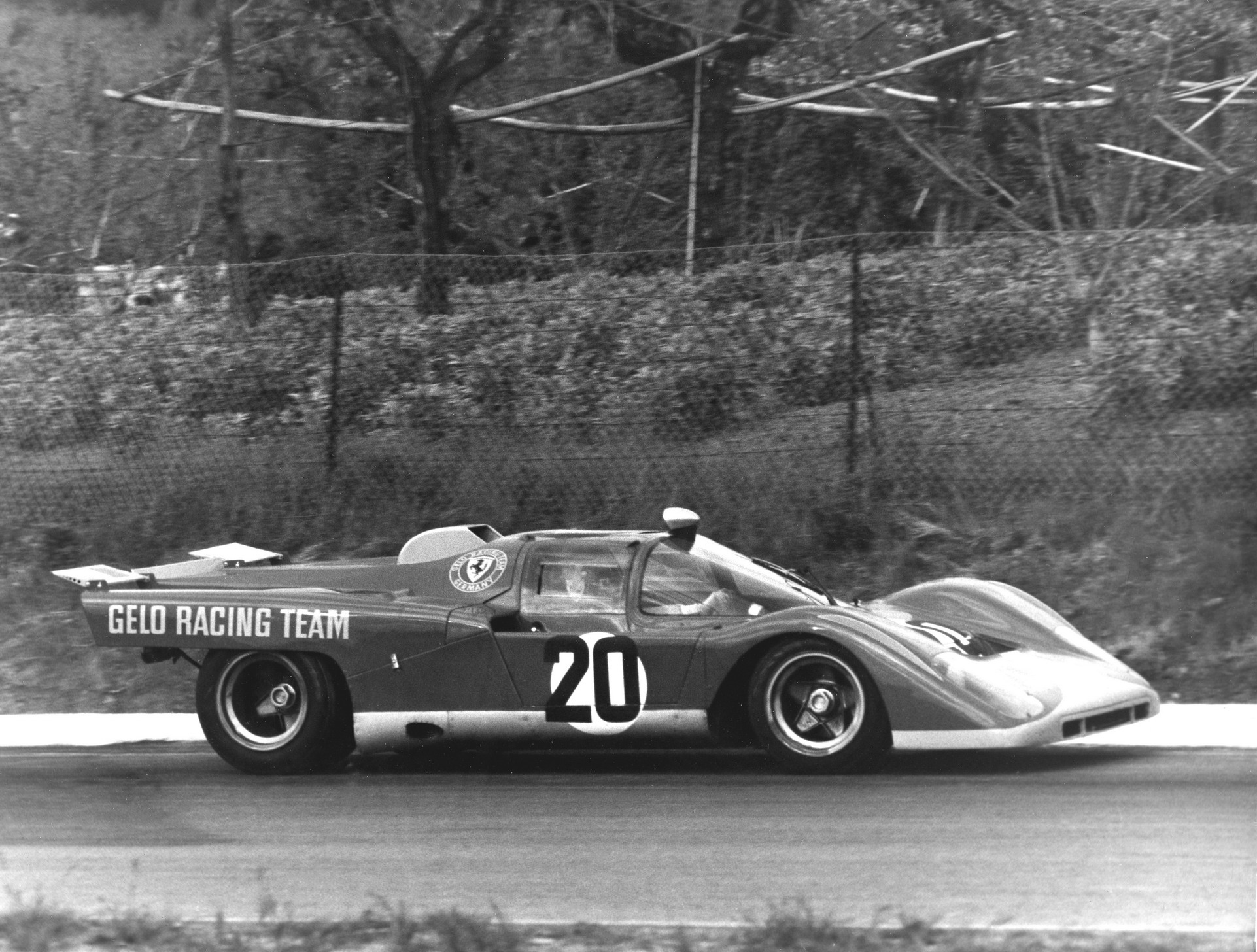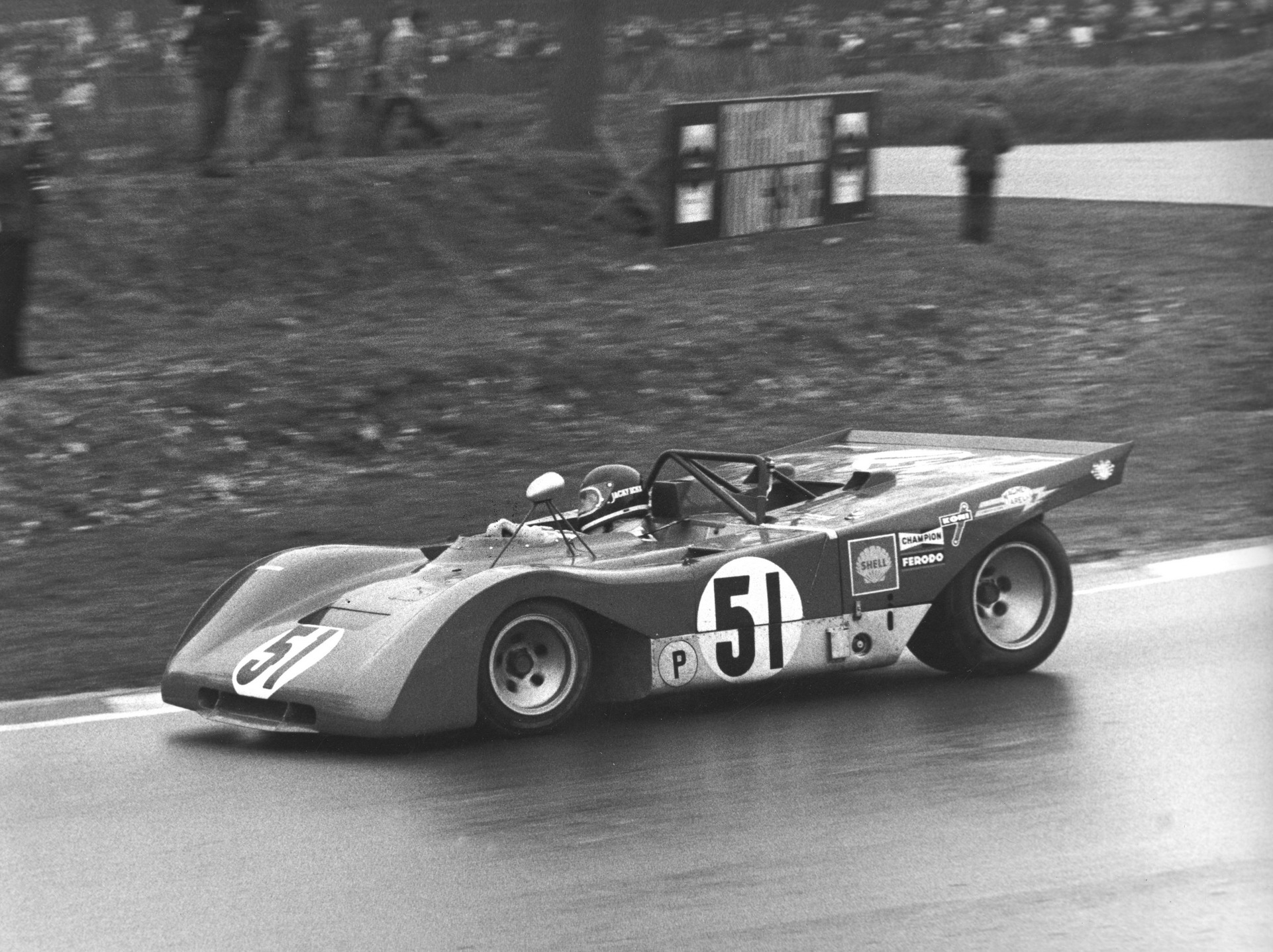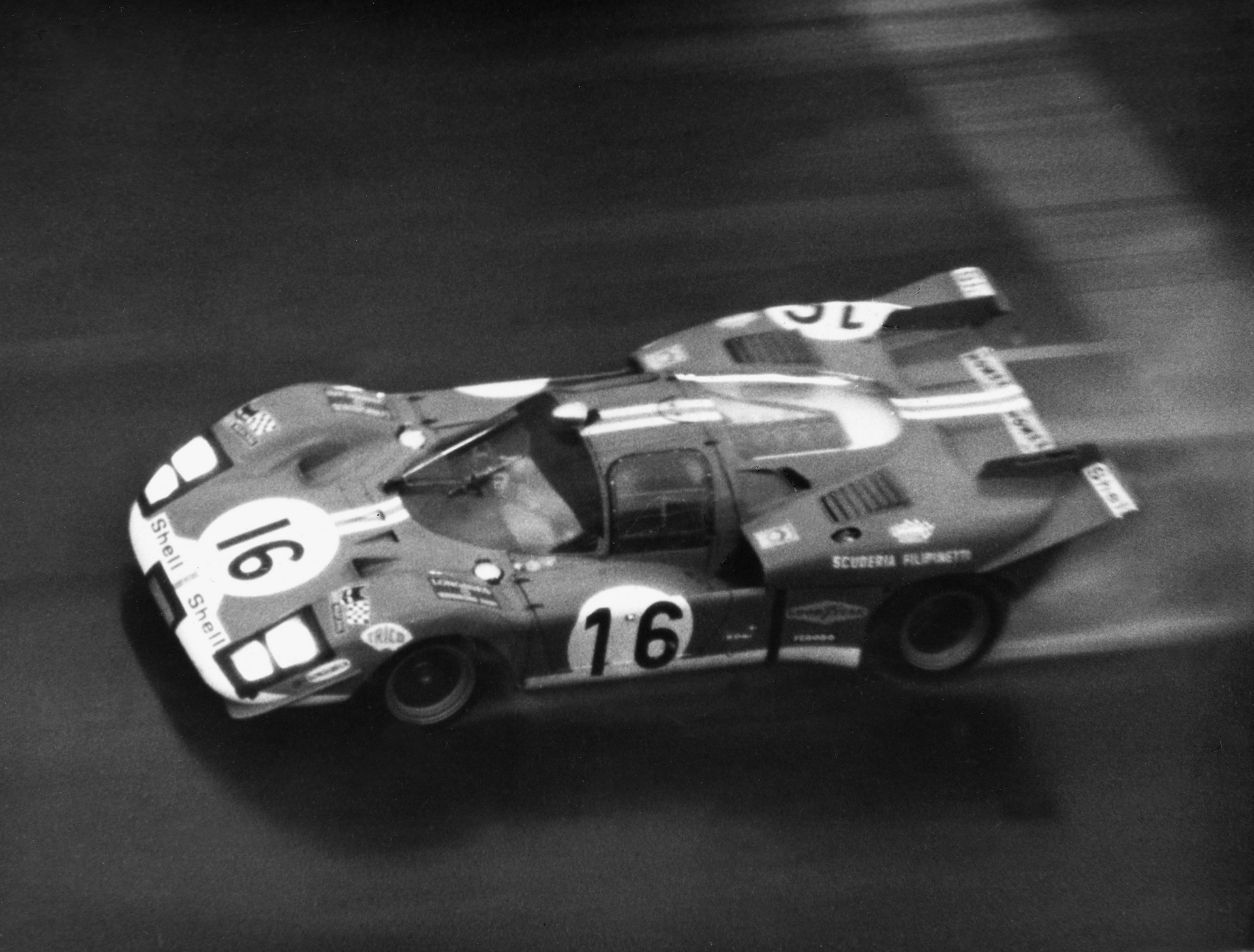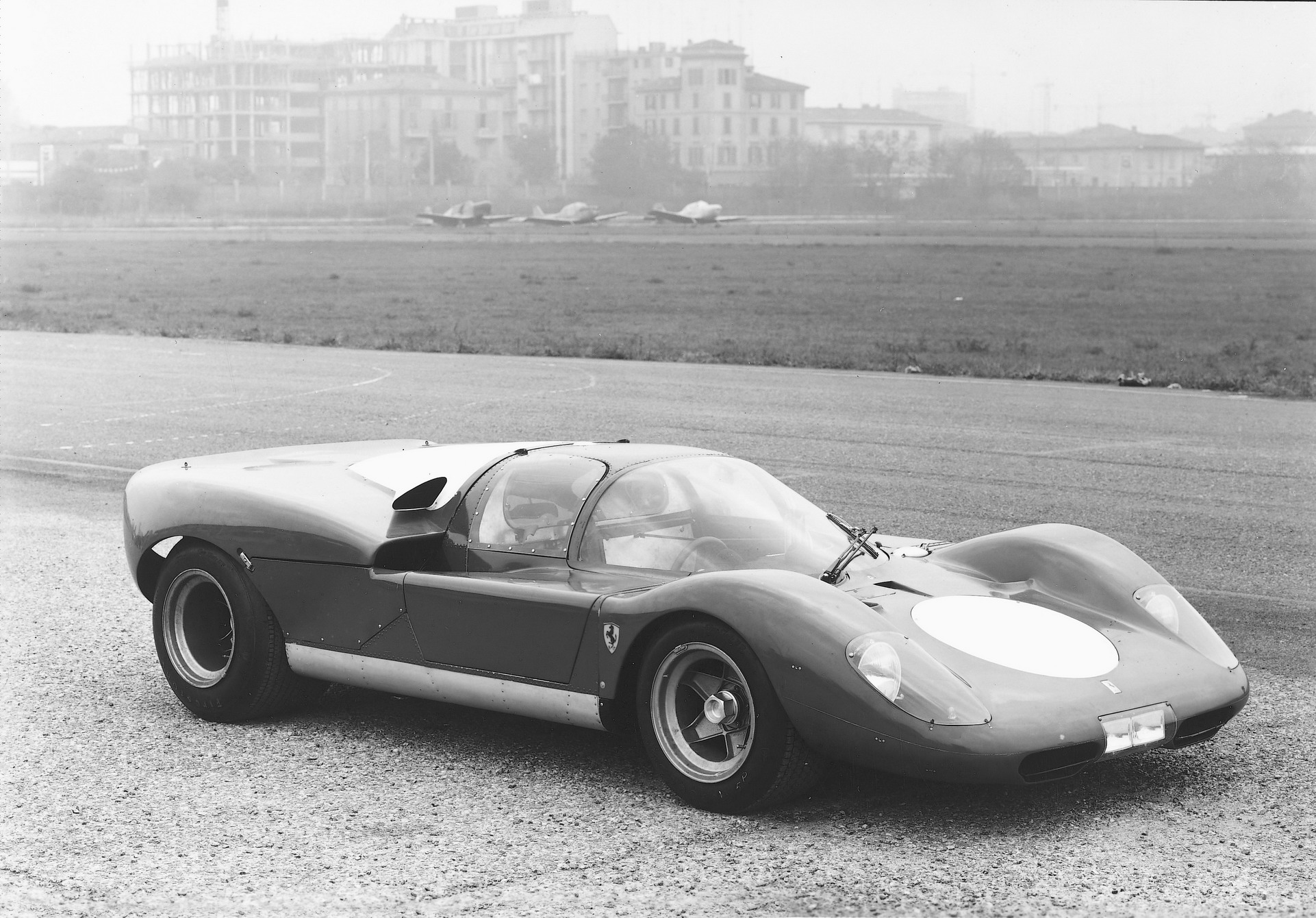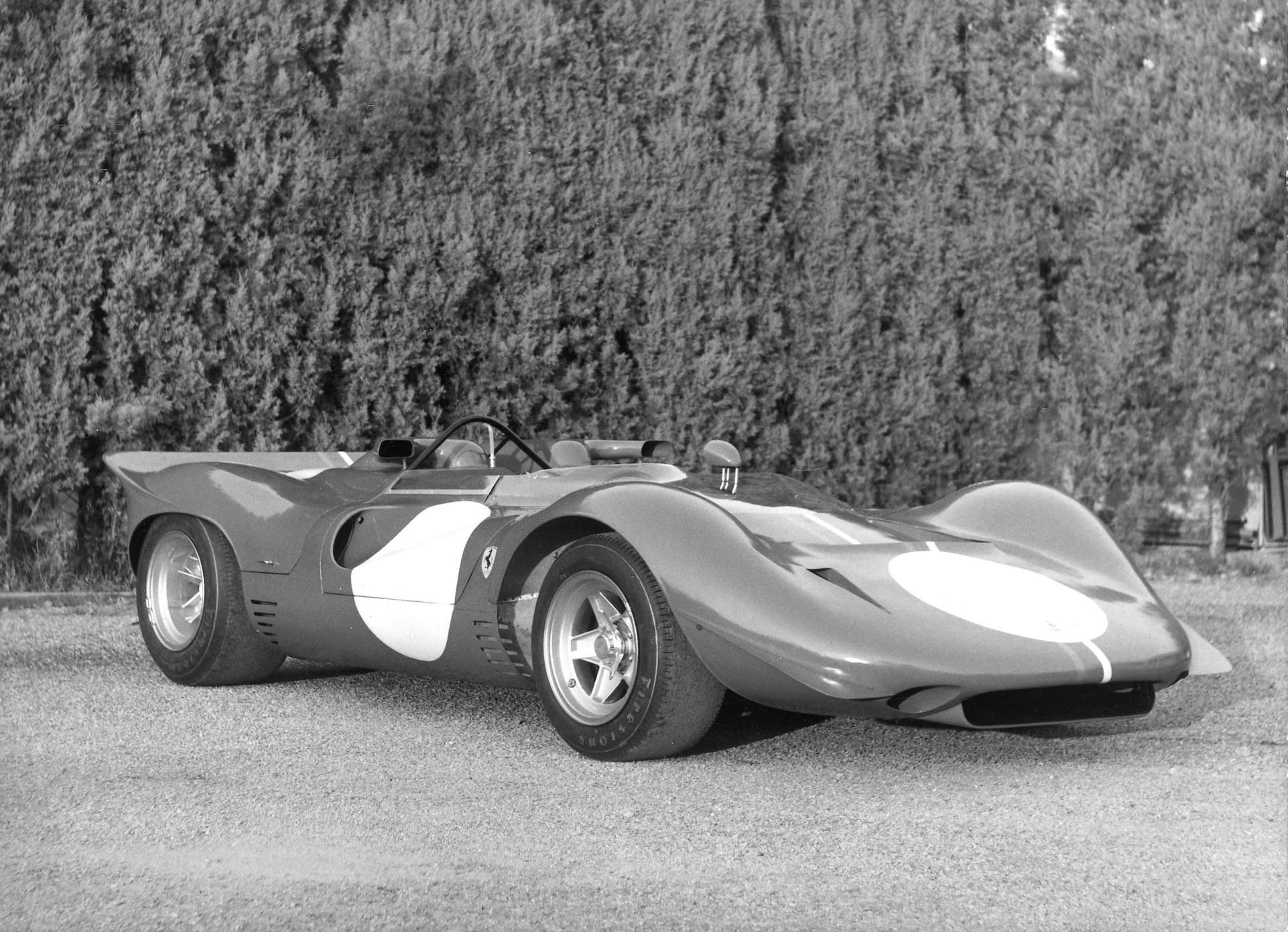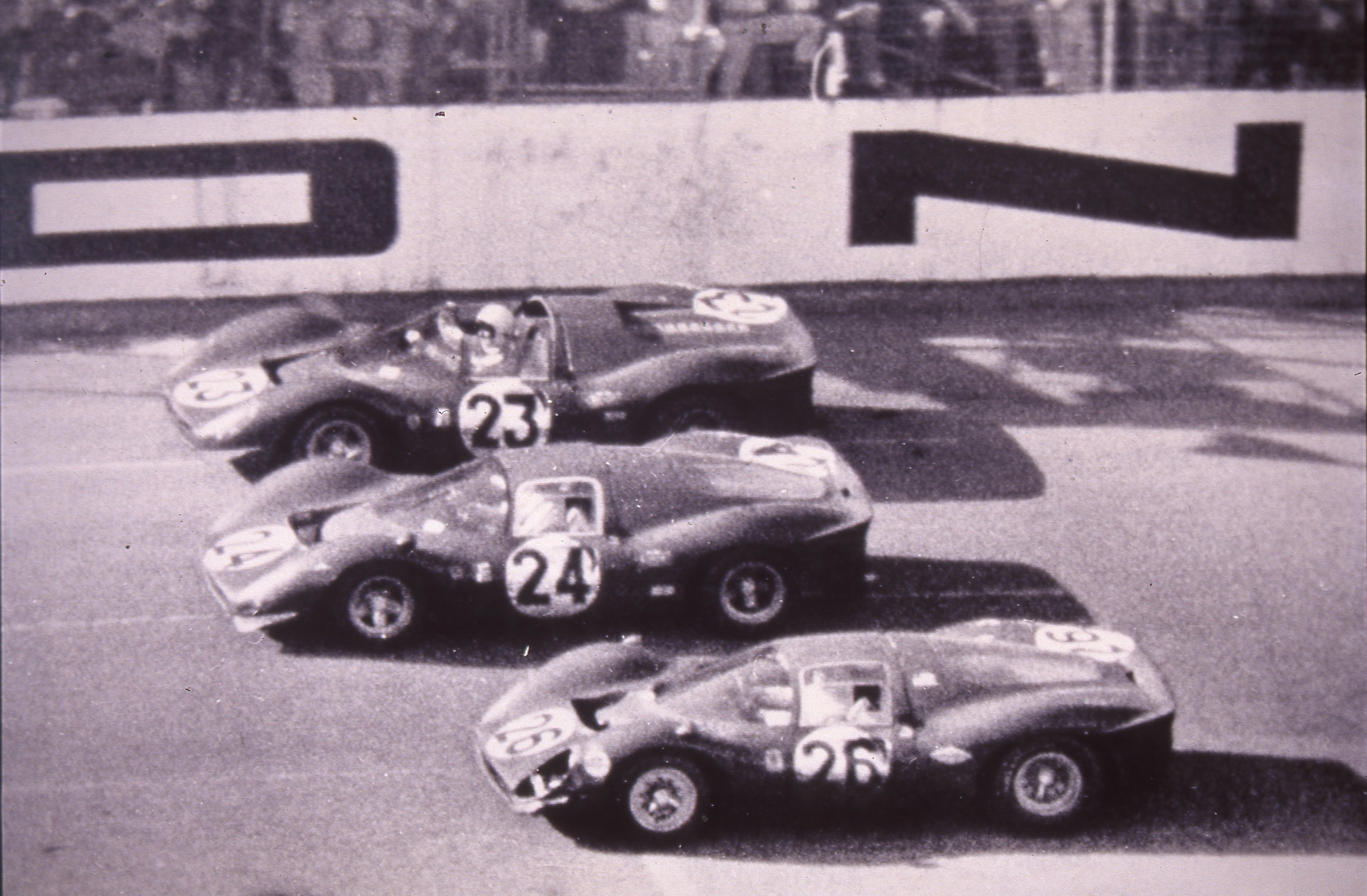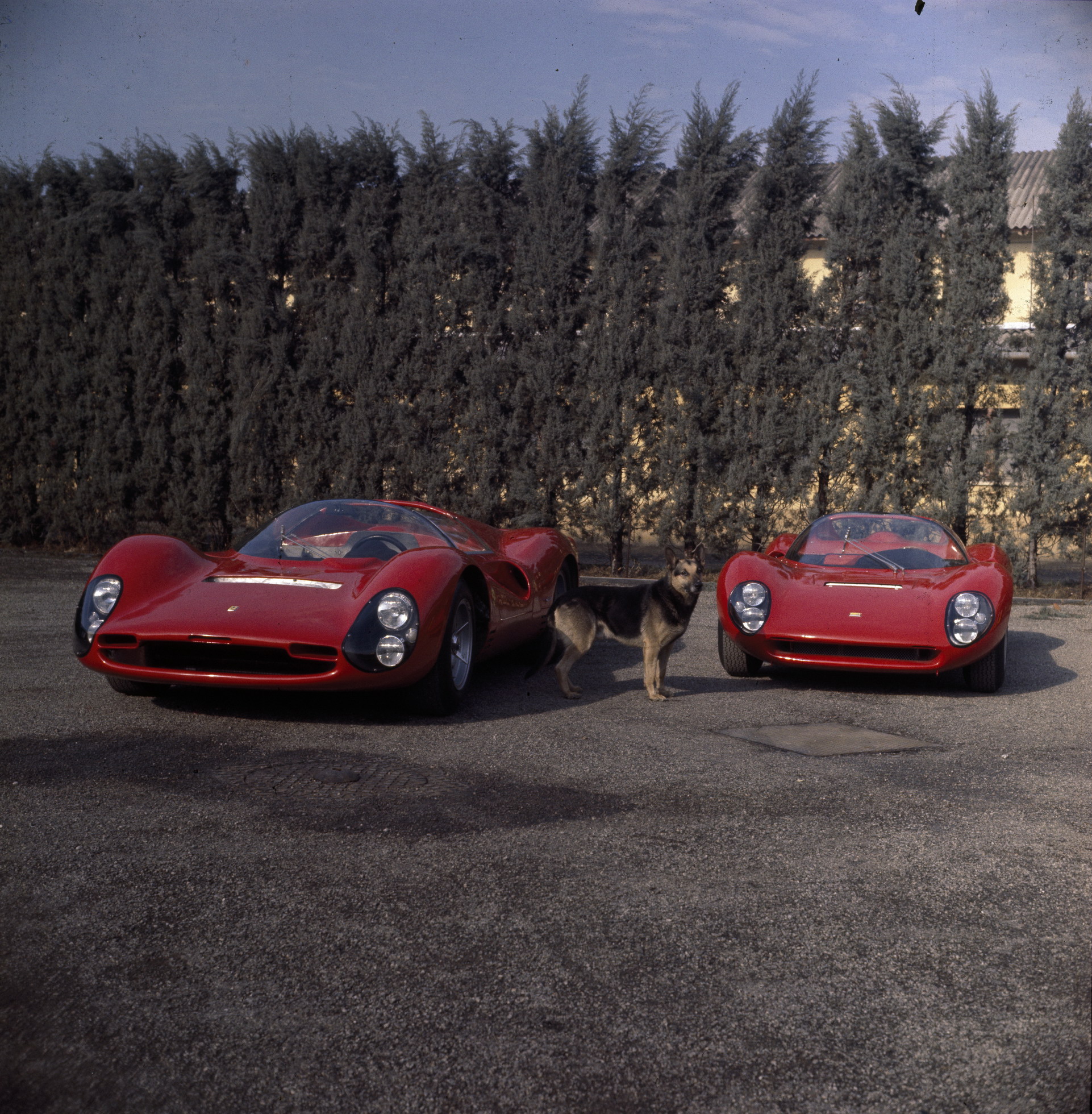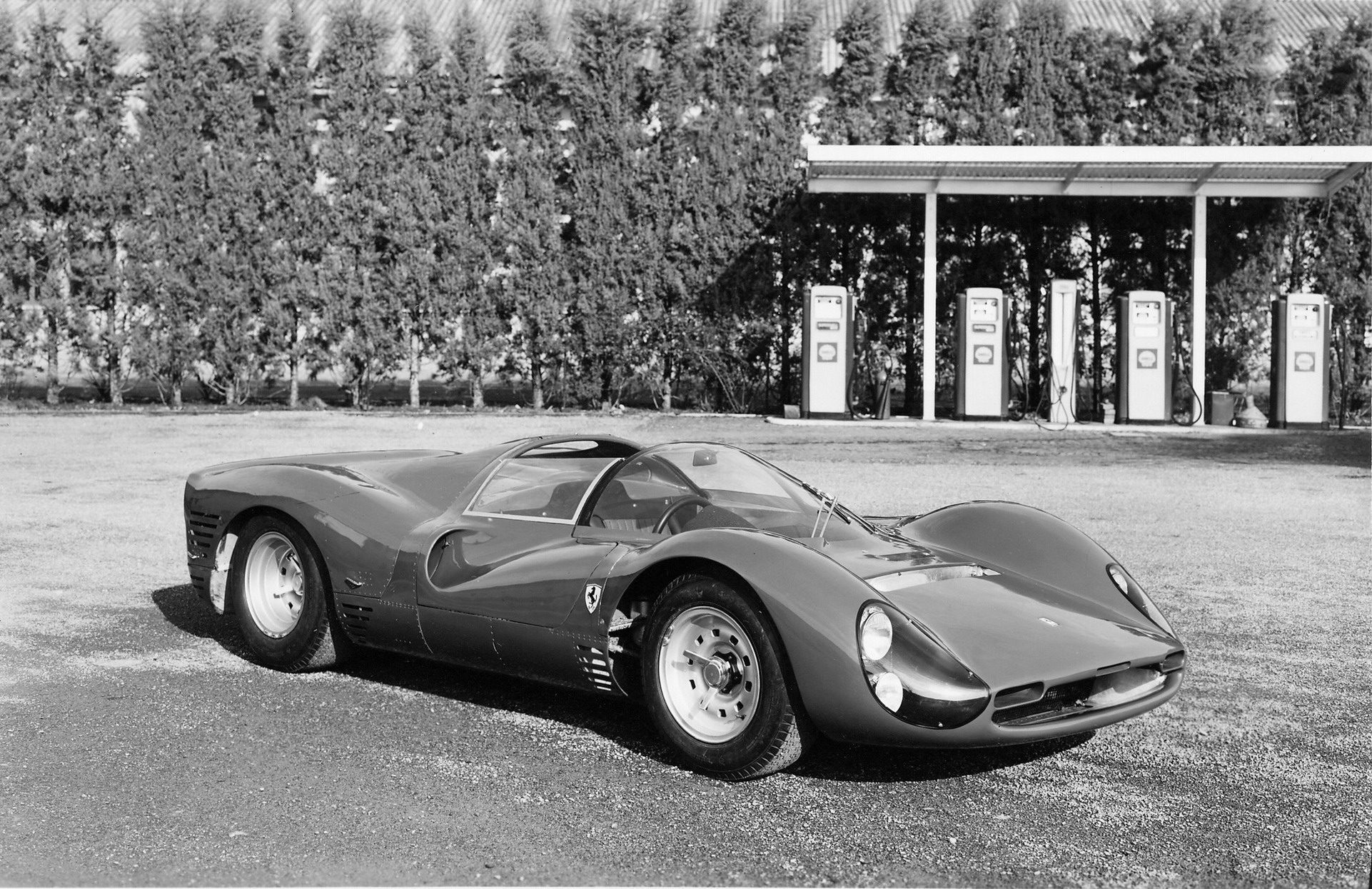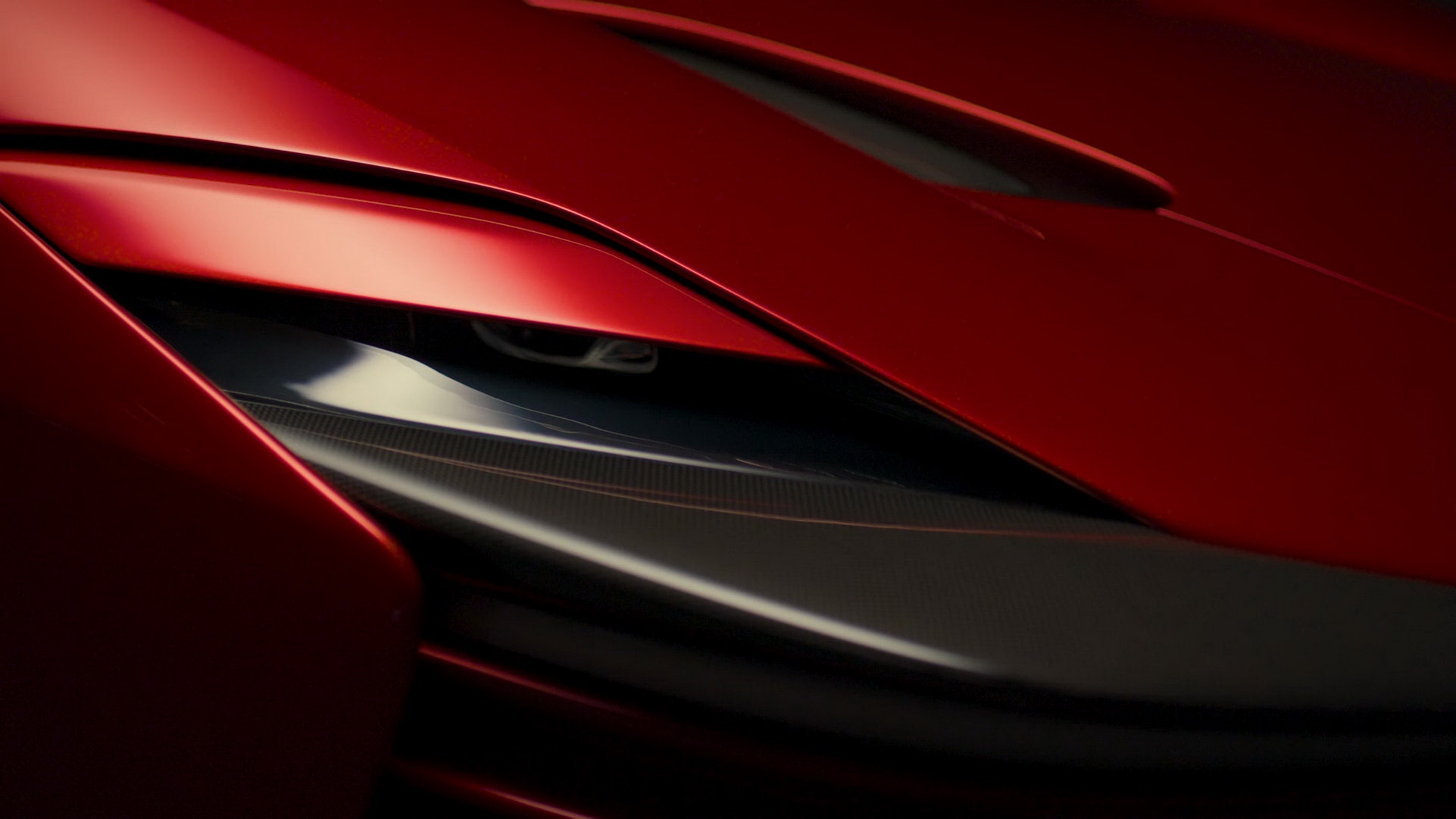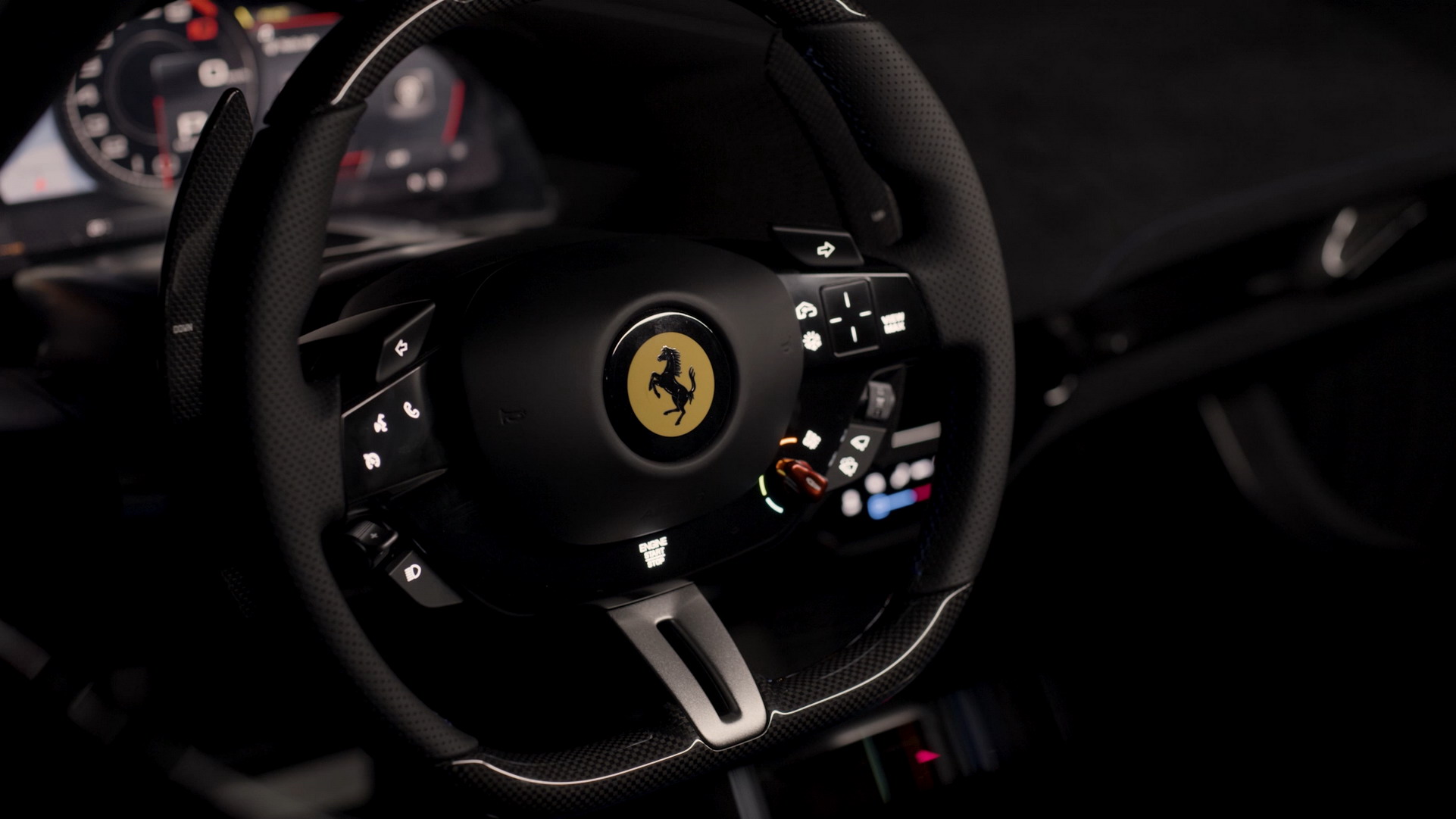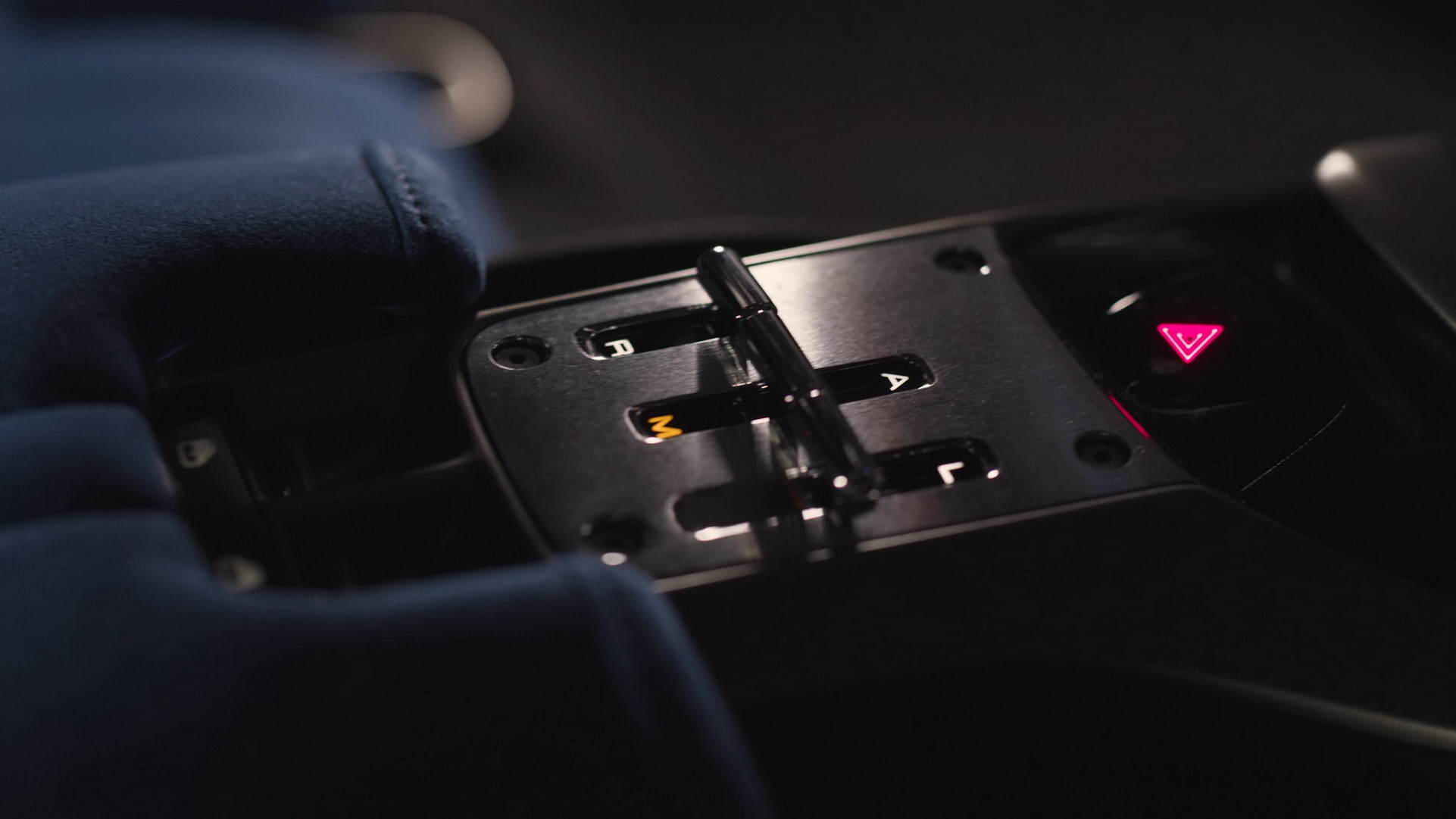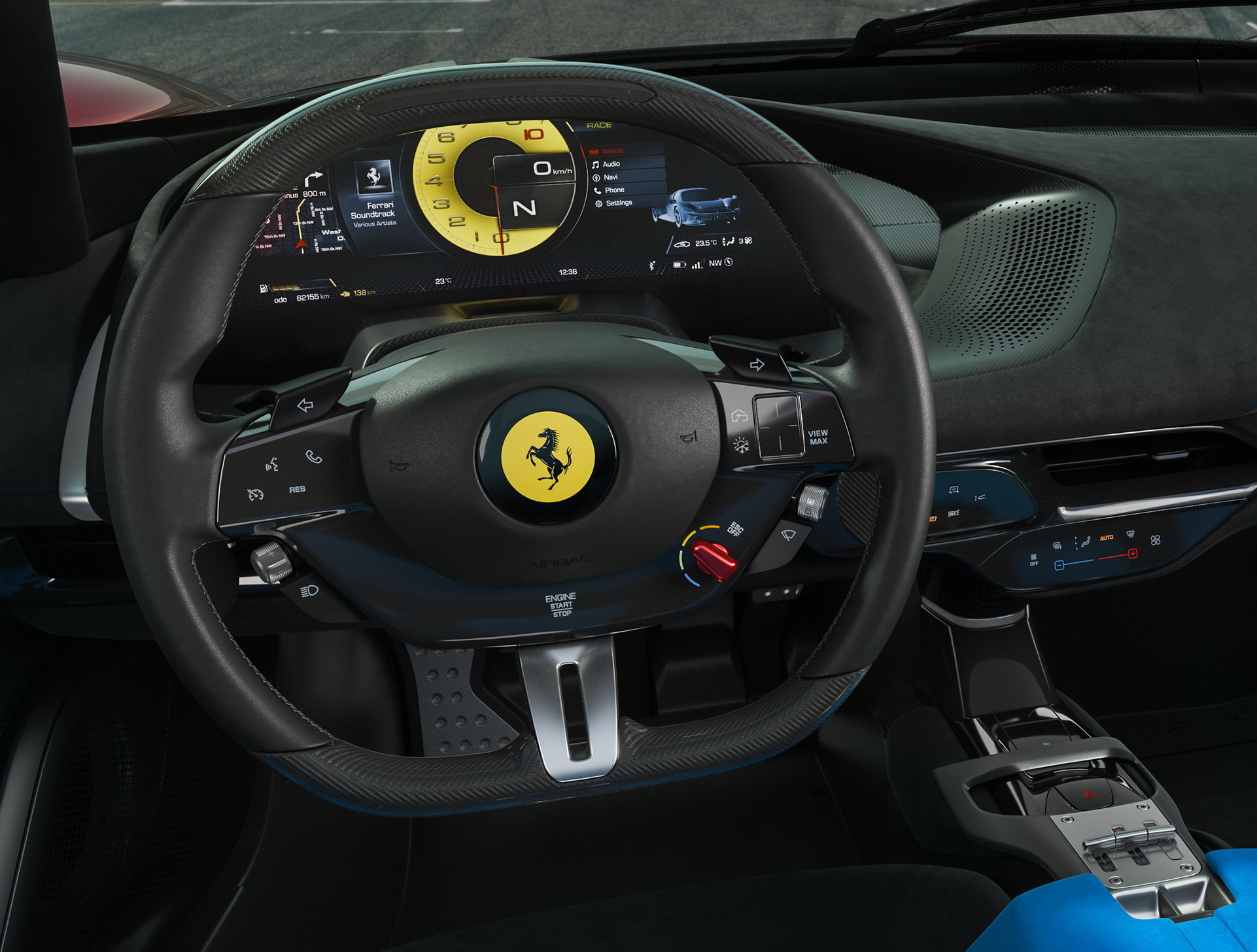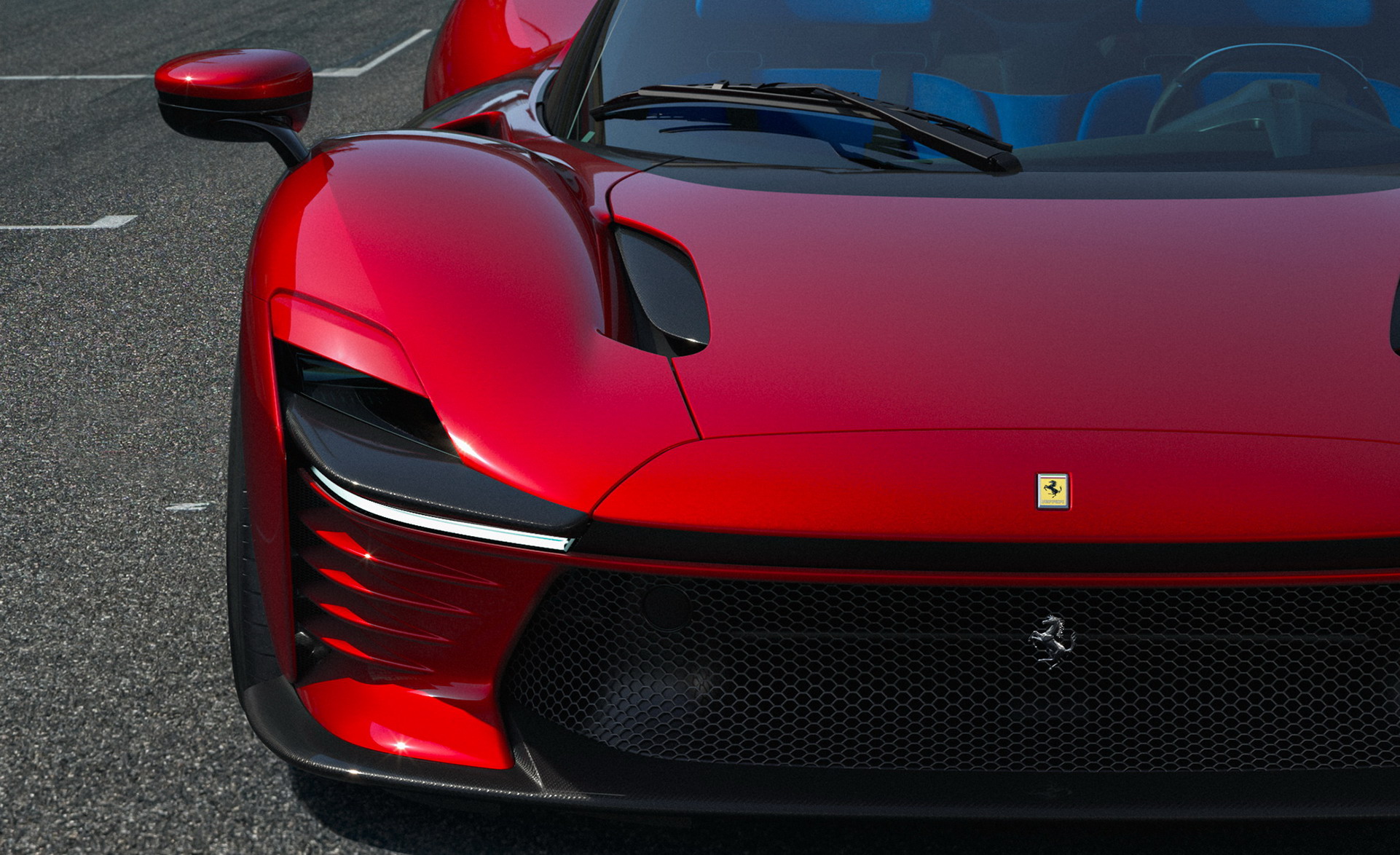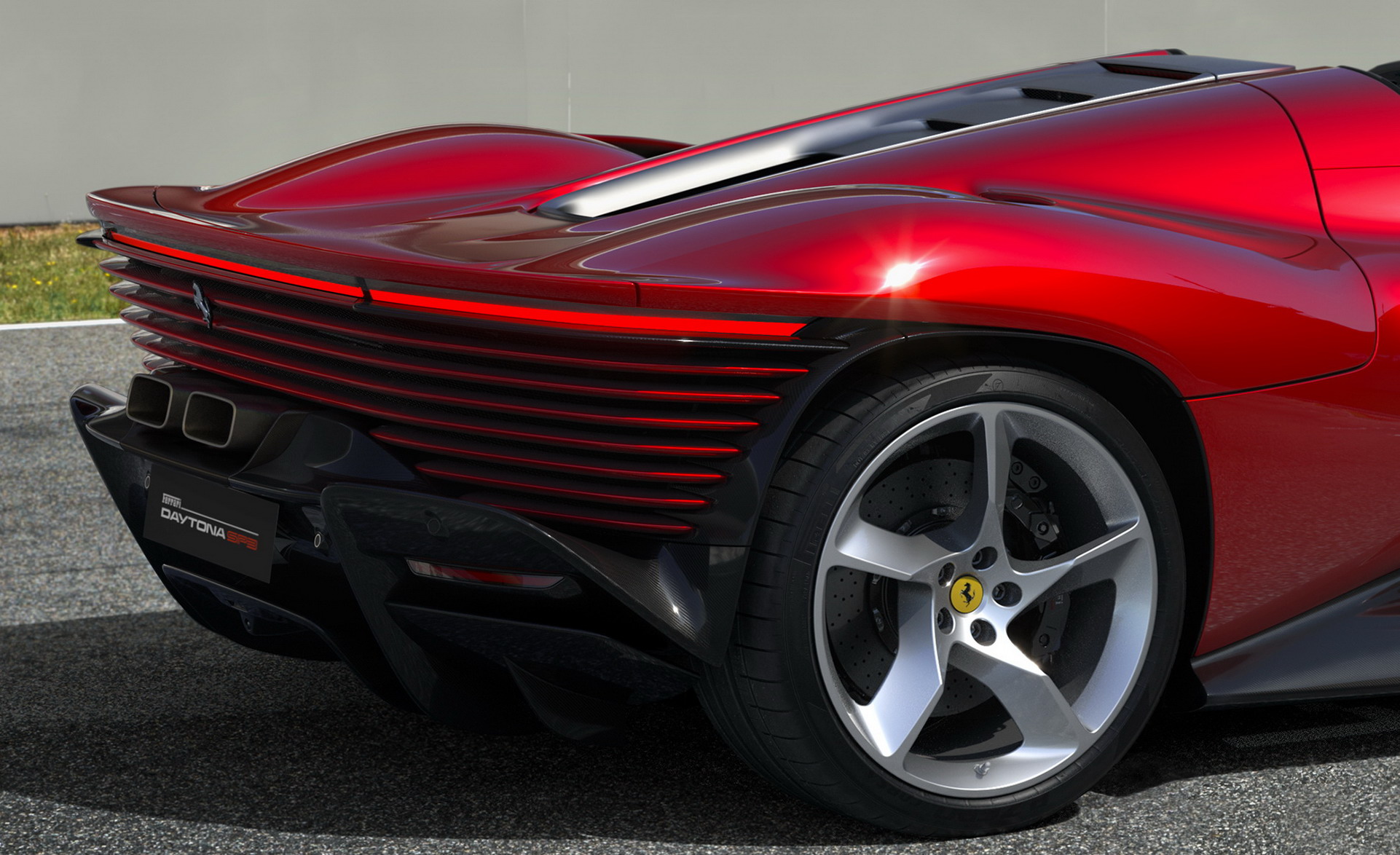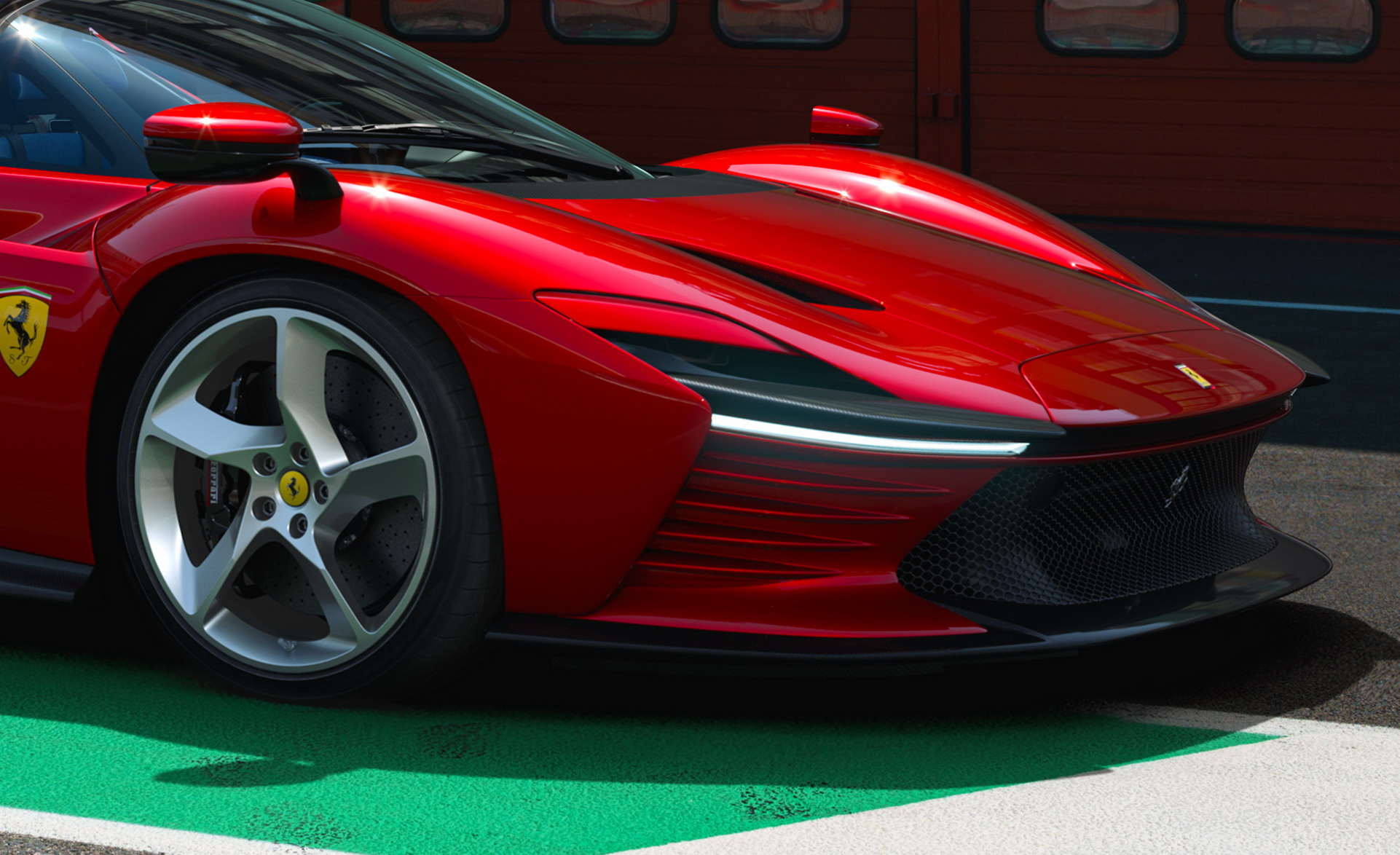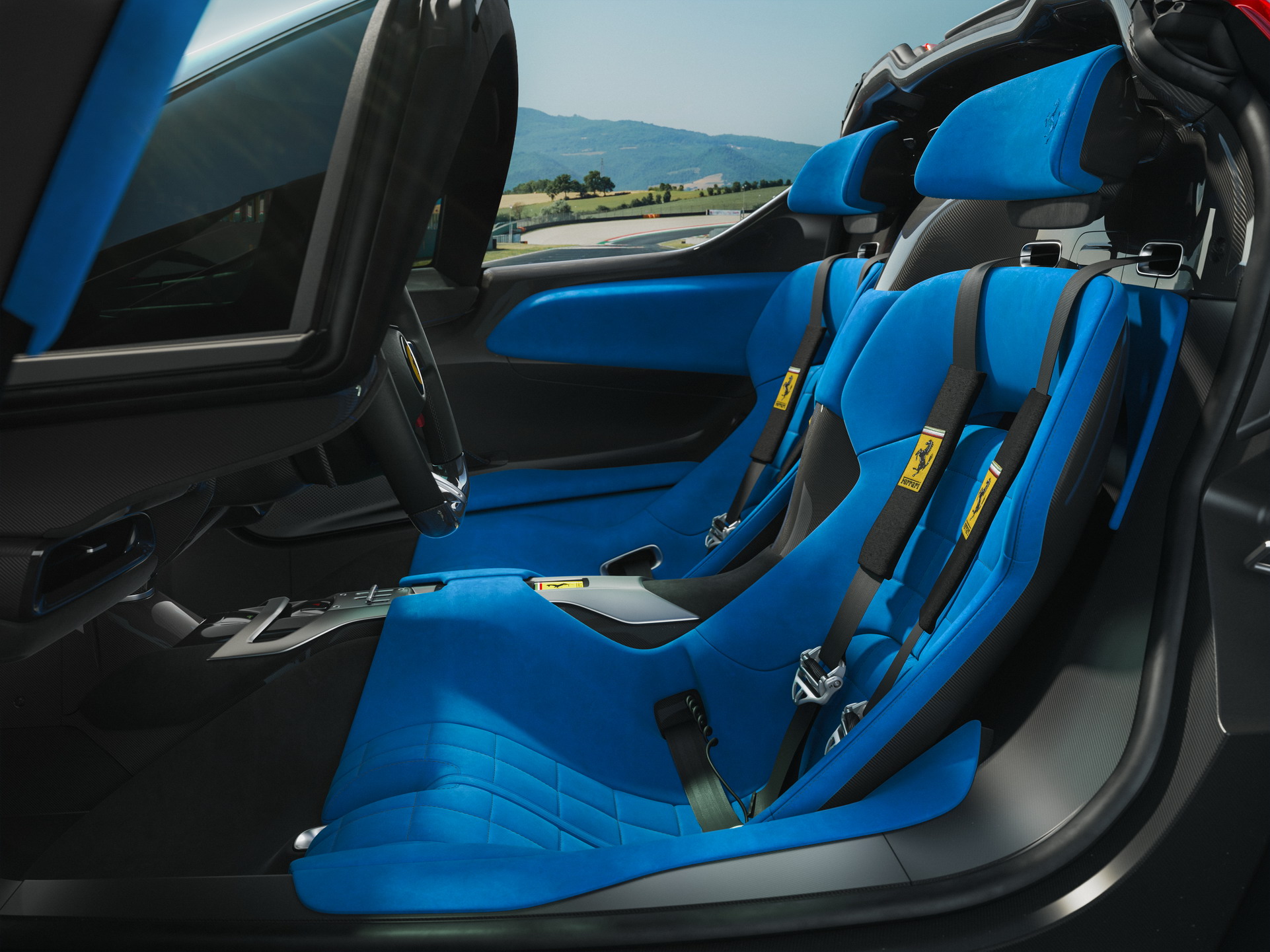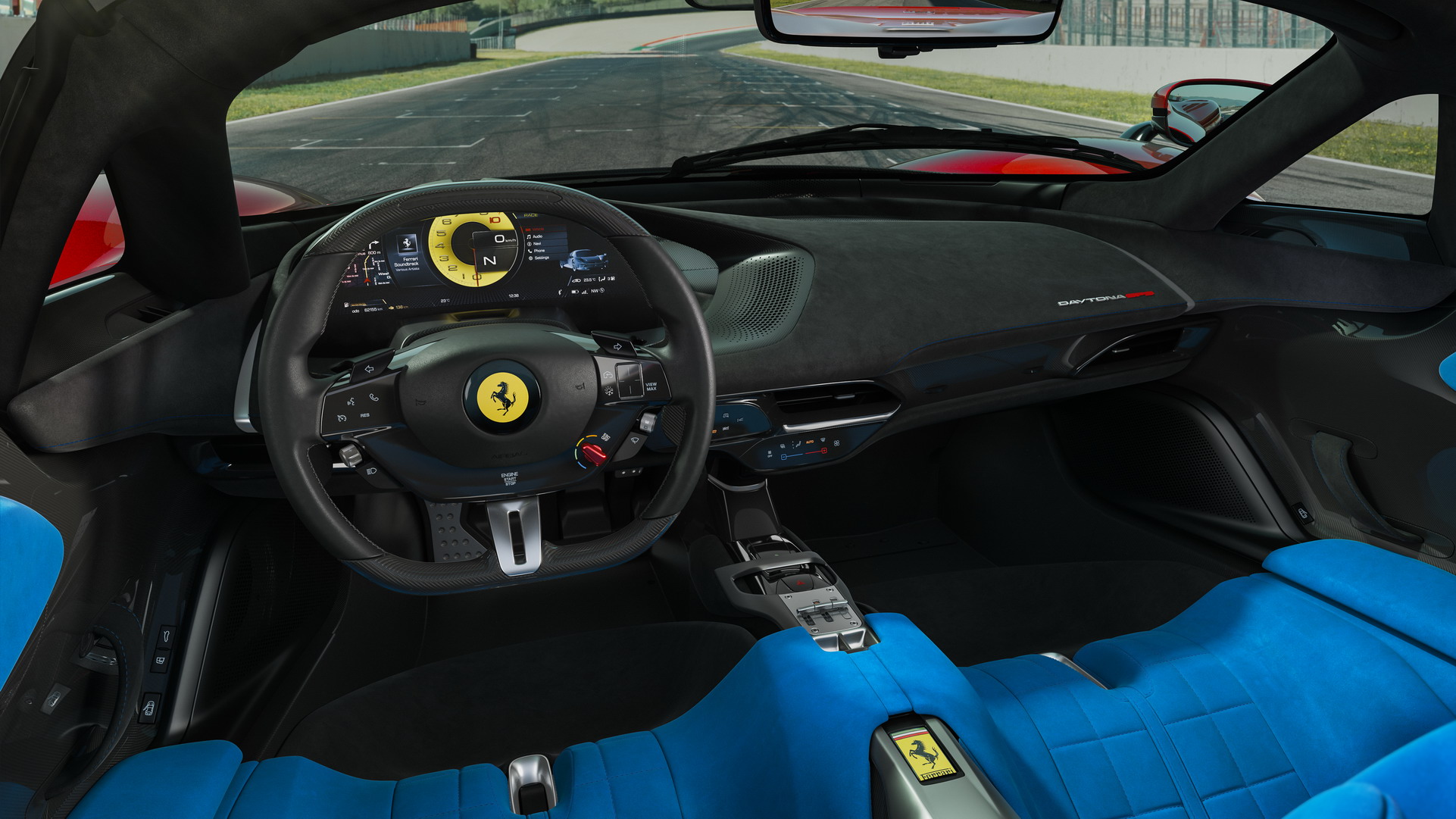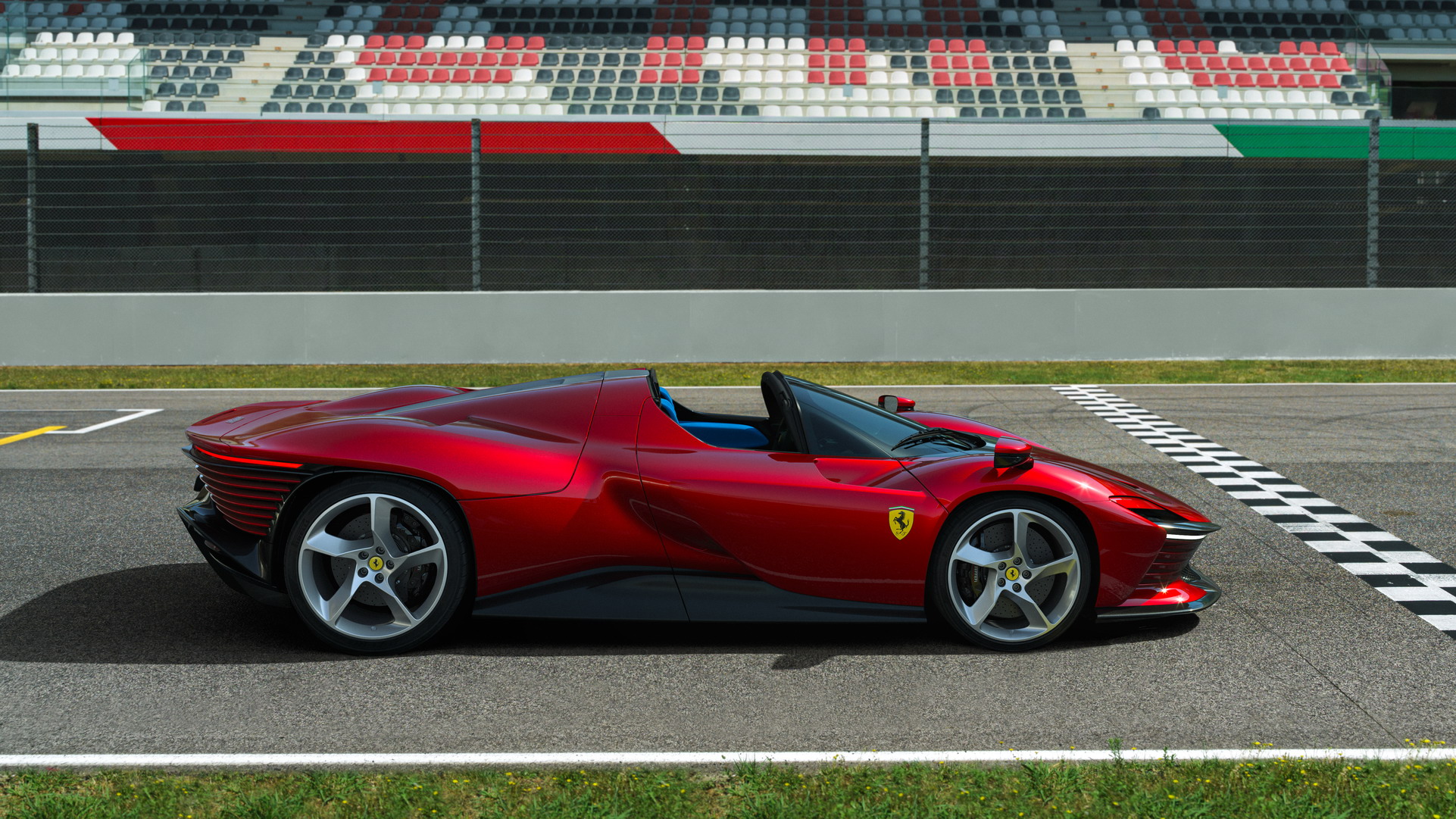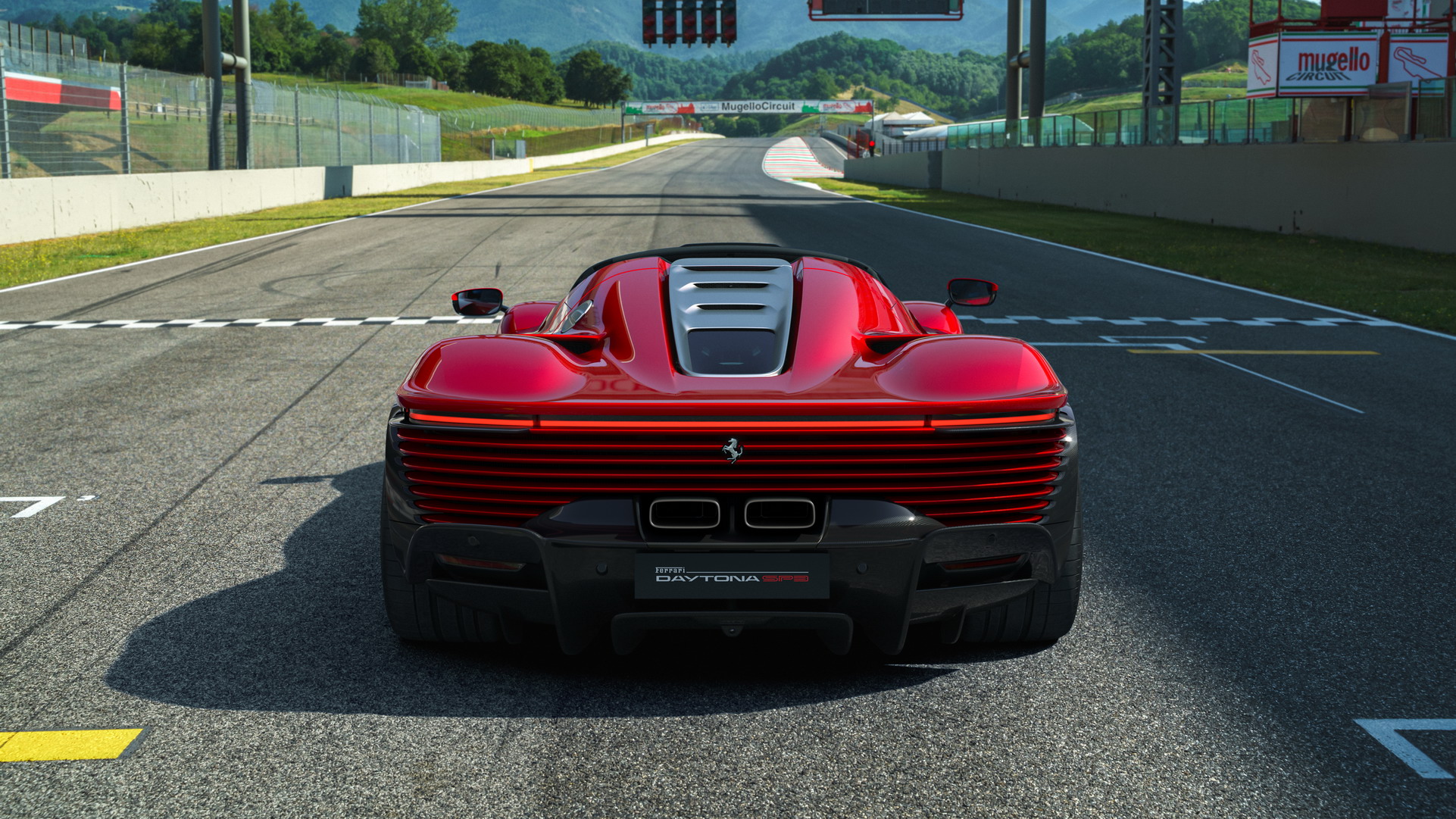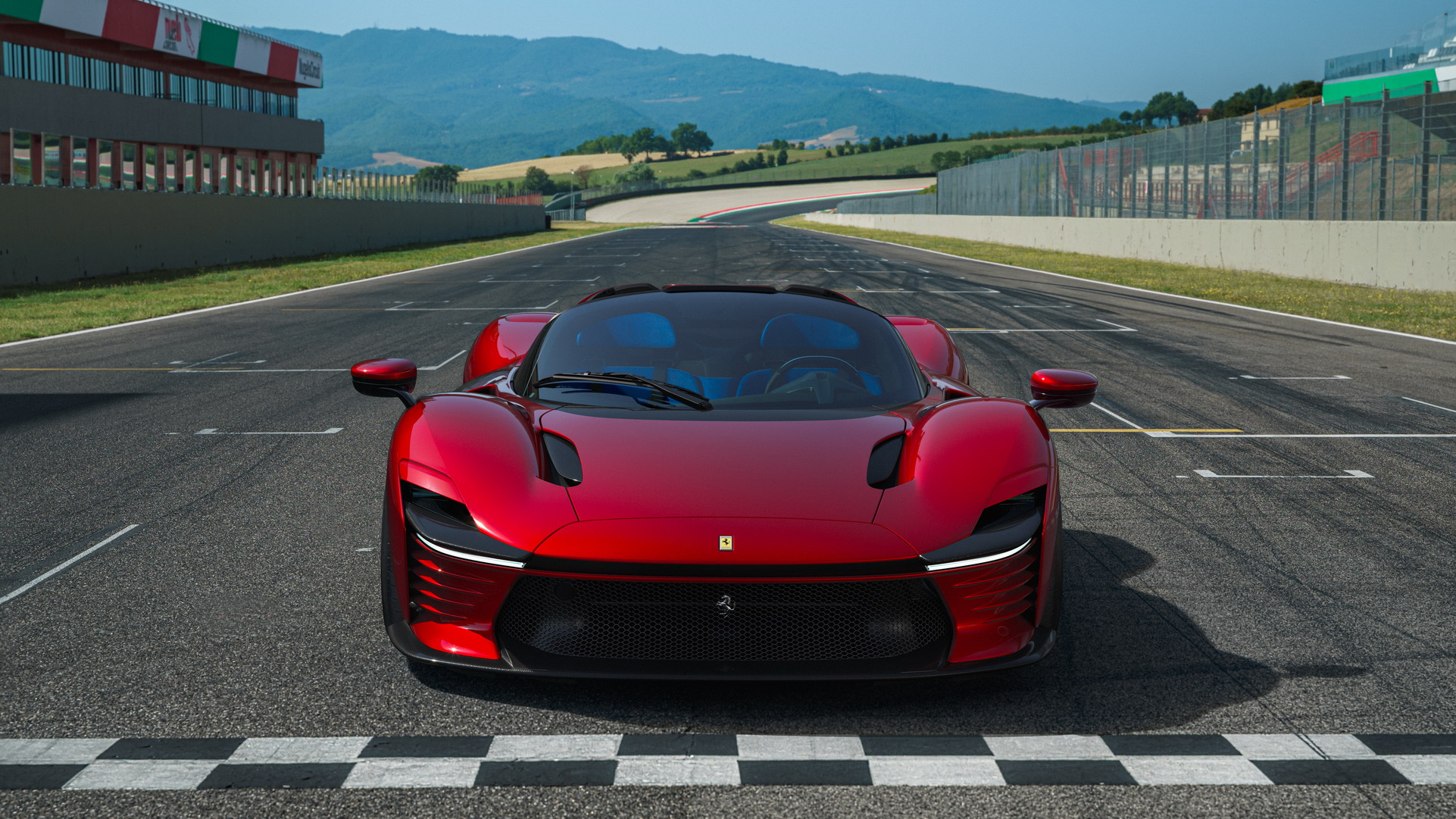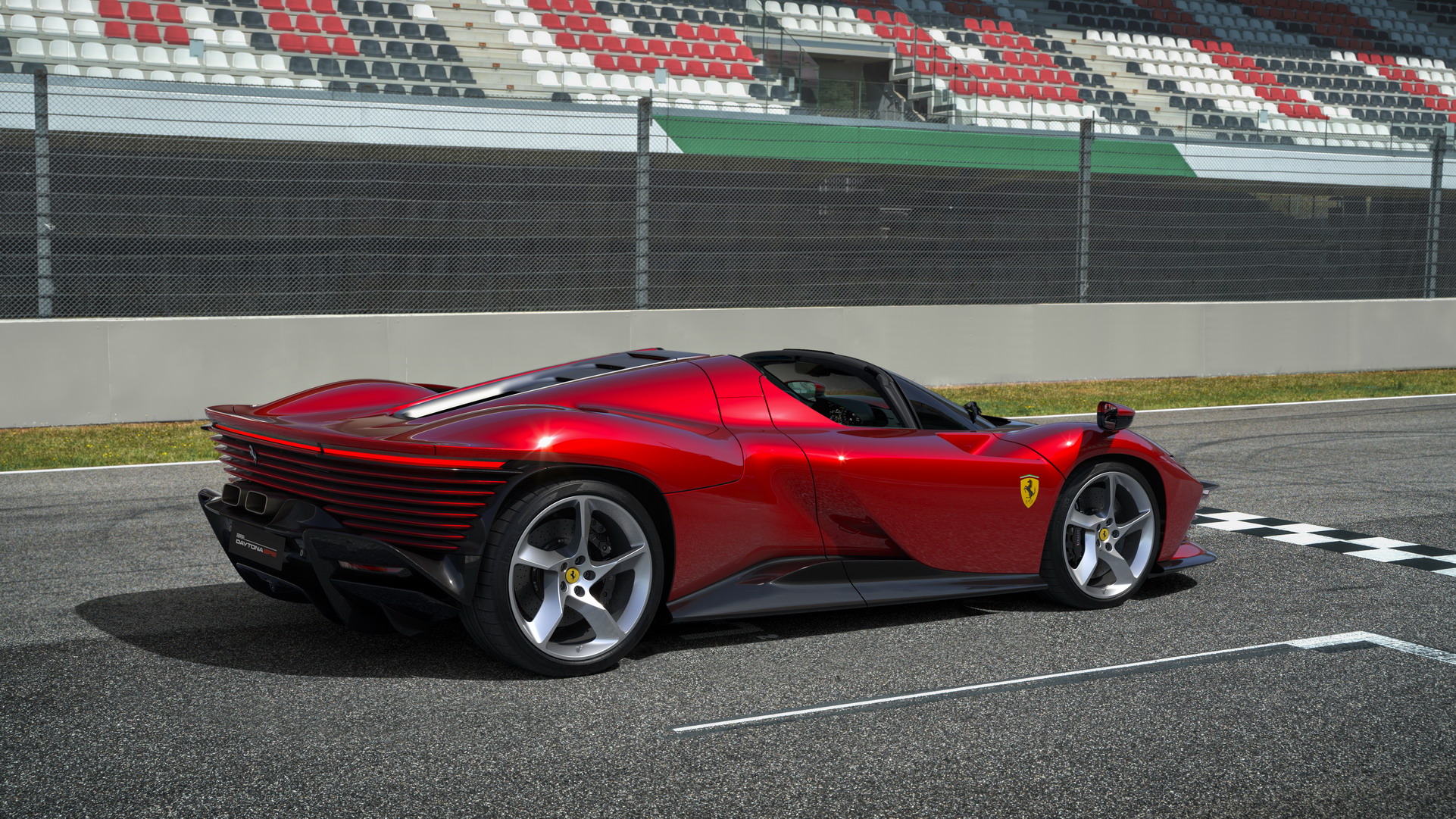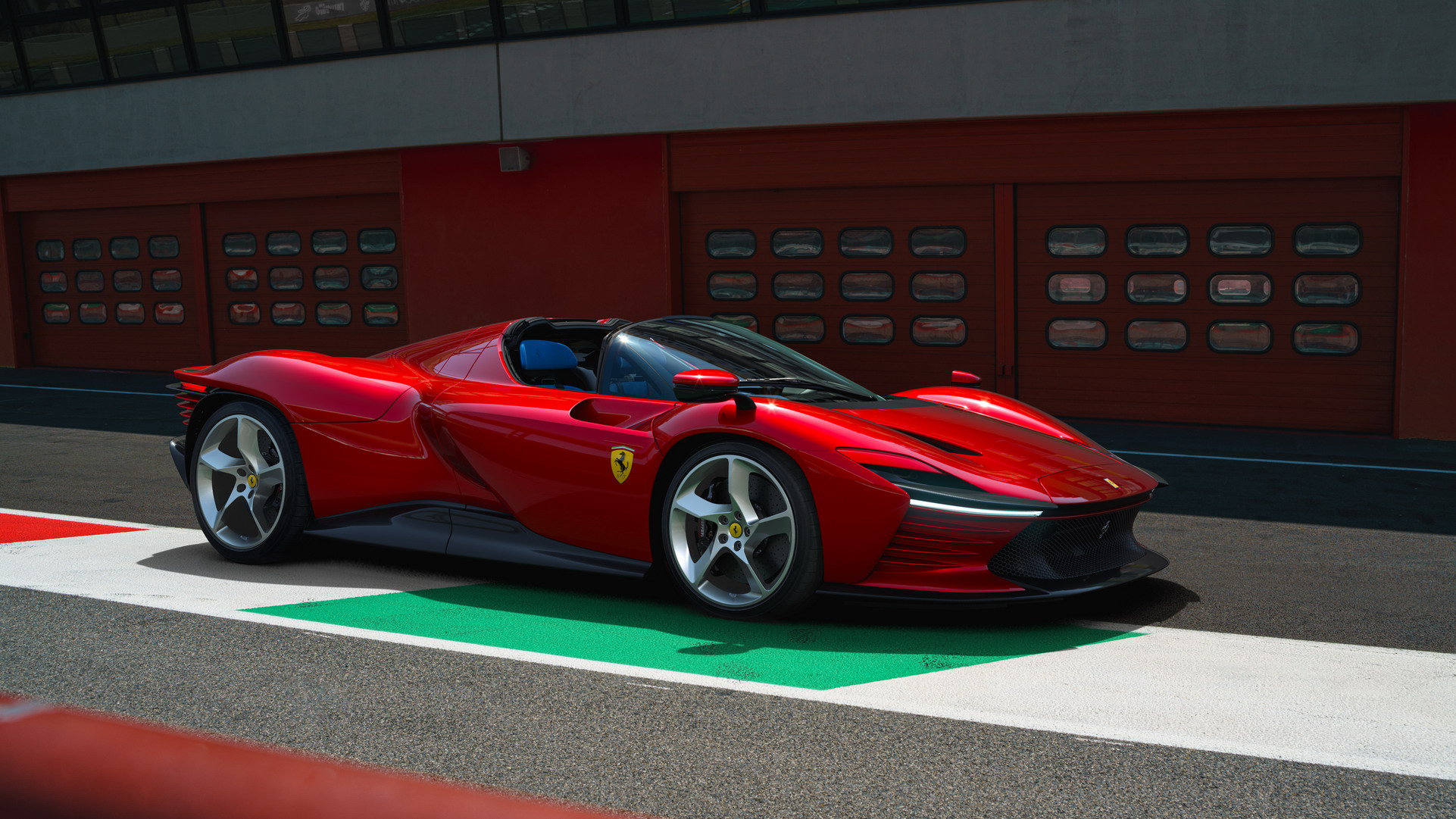Ferrari has officially unveiled their latest limited-production model, the SP3 Daytona, which is the third member of the Icona series following the Monza SP1 and SP2 from 2018. The exotic hypercar was designed to honor Ferrari’s 1-2-3 win in the 24 Hours of Daytona back in 1967. It has the most powerful internal combustion engine to ever come from Maranello, hiding under an aerodynamic low-slung body with a targa top.
From the first glance, the SP3 Daytona looks kinda like a La Ferrari Aperta with a completely redesigned body created by Flavio Manzoni and his team. Ferrari designers were inspired by the rounded shapes of the gorgeous P3/4, P330 and 412P that dominated Daytona back in the ’60s, however the modern hypercar has a more aggressive stance with sharper edges.
Dramatic Styling Echoing Italian Racers And Supercars Of The Past
At the front, there is a prominent splitter and “bumperettes” referencing the 330 P4 (1967), while the sharp nose sits lower than the bulged fenders reminiscent of past Ferrari racecars. The LED headlights have a complex structure and a pop-up mechanism with retractable ‘eye-lids’, again referencing past models, while the horizontal blades on the intakes is a theme that continues at the dramatic rear end – but more on than later.
The profile is heavily sculpted with butterfly doors that integrate an air box and feature surfacing inspired by the 512 S (1969-1970). The wraparound windscreen and the fender-mounted mirrors contribute to the exotic looks while aiding aerodynamics. Thanks to the door-mounted intakes there is no need for traditional side intlets allowing a sexier and cleaner design for the curvy rear fenders. The unique five-spoke wheels are shod in special Pirelli P Zero Corsa tires developed for the SP3 Daytona.
See Also: Ferrari P80/C Breaks Cover As One-Off Track-Only Supercar Based On 488 GT3
The rear end is probably the most dramatic view of the car that looks like a concept while sending serious retro vibes. The horizontal LED strip for the tailights is integrated into the numerous blades that cover the whole area above the carbon-fiber diffuser. A set of high-mounted trapezoidal exhaust pipes communicate the glorious sound of the V12 engine. The latter is hiding under a beautiful metal cover with a central backbone for improved cooling.
Aerodynamics played a key role on the SP3 Daytona’s development, with Ferrari claiming it has “the highest level of passive aero effifiency” among all of its models. This was achieved thanks to innovative solutions for efficient heat dissipation management from the mechanical components, along with clever design for cooling and downforce. The most notable innovation in the aero segment is actually not visible: a couple of floor chimneys at the rear of the underbody are connected to louvers in the rear wings through vertical ducts, maximizing air flow and increasing downforce.
Minimalist Retro-Inspired Interior
Inside, the fixed seats are an integral part of the cabin, merging above the center tunnel and expanding on the side sills with vivid upholstery matching the surrounding trim. This design is inspired by the racecars of the ’60s where the driver sat on cushions directly attached to the chassis. Indeed, the driving position is lower and more reclined compared to other Ferrari models, similar to that of a single-seater.
The dashboard has a minimalist look with suede upholstery and a 16-inch curved digital instrument cluster incorporating the infotainment. The steering wheel looks quite similar to the La Ferrari with a single manettino dial and integrated buttons allowing the driver to access 80% of the vehicle’s functions without taking his hands off of it. Another cool element is the gearshift gate and of course plenty of exposed carbon fiber.
Traditional Approach To Modern Mid-Engined Underpinnings
The hypercar might share is carbon-fiber monocoque with the La Ferrari but ditches the hybrid powertrain for a more traditional recipe. Both the chassis and the bodywork are made entirely of composite materials (aeronautical composites, Kevlar, carbon-fiber, etc), for the lowest possible weight.
The naturally aspirated 65° V12 6.5-liter V12 codenamed F140HC is based on the 812 Competizione‘s unit but features a number of updates focused on the intake and exhaust, aided by its relocation to a mid-rear position. The most powerful ICE ever built by Ferrari produces 829 hp (618 kW / 840 PS) at 9,250 rpm, and 697 Nm (514 lb-ft) of torque at 7,250 rpm, with a rev limiter at 9,500 rpm. Power is sent to the rear axle through a faster F1 dual-clutch 7-speed gearbox with the help of a limited-slip differential.
See Also: Retro-Influenced BR20 Is Ferrari’s Latest One-Off Special
As a result, the Daytona SP3 accelerates from 0-100 km/h (0-62 mph) in 2.85 seconds, and from 0-200 km/h (0-124 mph) in 7.4 seconds, while its top speed exceeds the 340 km/h (211 mph) mark. While those features are not record-setting, they are still impressive for a naturally aspirated ICE-only car, especially if we consider that Ferrari’s performance figures are often significantly better in real life compared to the official specs.
What matters most in this cases is the driving dynamics, enhanced by the clever use of electronic aids including the latest version of Ferrari’s SSC 6.1 (Side Slip Angle Control) which comes with the FDE (Ferrari Dynamic Enhancer), a lateral dynamics control system that acts on the brake pressure at the calipers to control the car’s yaw angle in on-the-limit driving and can be activated in ‘Race’ and ‘CT-Off’ modes on the Manettino.
599 Examples At 2M Euros A Pop, But You’re Too Late
Finally, like the previous Icona models, the SP3 Daytona will be a limited run. Ferrari will make 599 examples, each costing €2 million (about $2.3 million at today’s exchange rates) plus local taxes. However, Autonews reports that Ferrari marketing and sales boss Enrico Galliera said that all 499 owners of the Monzas decided to also buy the Daytona SP3, while the other 100 were sold to a “select” group of Ferrari collectors, so the new hypercar is effectively sold out.




